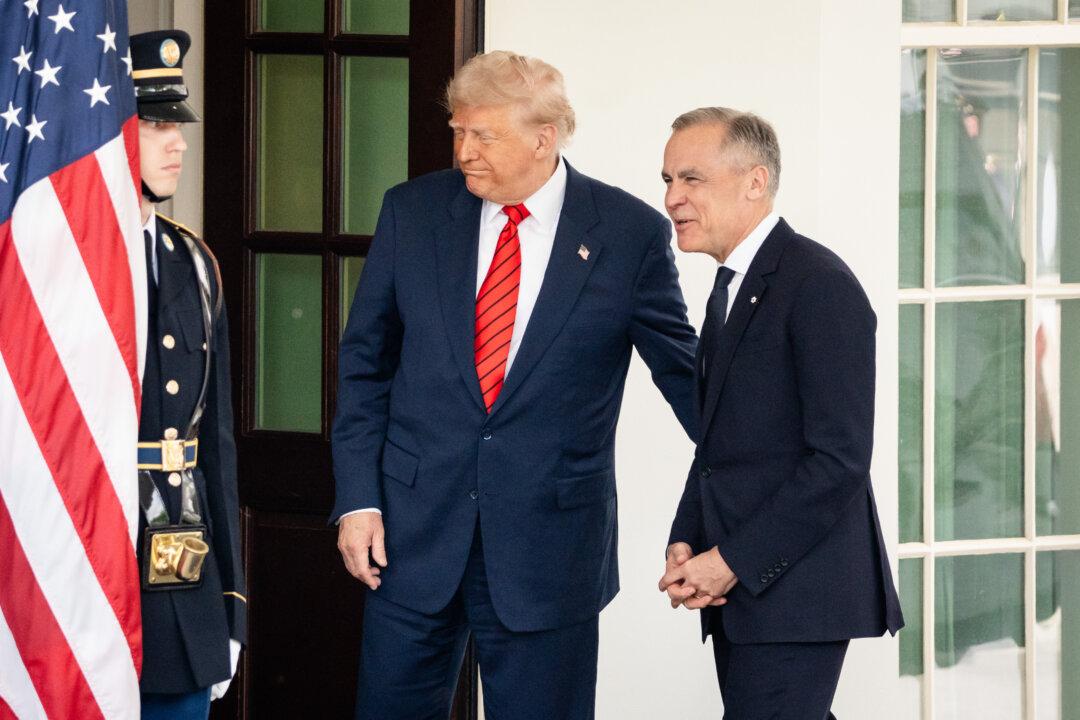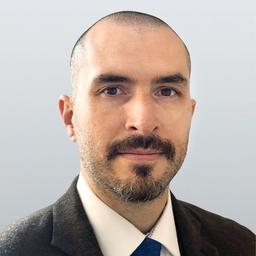U.S. President Donald Trump and Canadian Prime Minister Mark Carney had their first official in-person meeting on May 6 at the White House.
Trump Praises Carney as ‘Talented,’ Carney Calls Trump a ‘Transformational President’
There was much to lose for Carney going into a public meeting with Trump in the Oval Office, but save for Trump’s ongoing 51st state comments, there wasn’t much drama.On the contrary, Trump heaped praise on Carney and signalled that the relationship would be much smoother than under Carney’s predecessor, Justin Trudeau.
Carney had campaigned heavily on Trump’s tariffs and 51st state comments, saying Canada faces the “biggest crisis of our lifetimes,” but he steered clear of pointed criticism during the meeting.
“I think Canada chose a very talented person, a very good person,” Trump said at the beginning of the meeting at the White House on May 6, congratulating Carney on his election victory.
Trump went further by saying that the Liberals’ win, after “losing by a lot” in the polls, was “probably one of the greatest comebacks in the history of politics, maybe even greater than mine.”
Trump made his feelings toward Trudeau known again as Carney was sitting by his side. The prime minister was accompanied in the meeting by senior ministers under Trudeau, such as Foreign Affairs Minister Mélanie Joly, International Trade Minister Dominic LeBlanc, and Public Safety Minister David McGuinty.
“I won’t say this about Mark, but I didn’t like his predecessor,” Trump said in reference to Trudeau, whom he started to refer to as “Governor” of Canada after meeting with him in Florida in late November 2024.
“I didn’t like a person that worked—she was terrible, actually, she was a terrible person, and she really hurt that deal very badly,” Trump added in apparent reference to Chrystia Freeland, who was foreign affairs minister when Canada renegotiated the North American free trade deal during Trump’s first term.
The praise went both ways during the meeting in the Oval Office. While Carney had criticized Trump heavily during the election campaign and said the traditional and longstanding relationship in its previous form with the United States was “over,” he struck a different tone during the public meeting.
‘51st State’
With the exchange of pleasantries over, it wasn’t long before a reporter asked Trump about his repeated comments on making Canada the 51st U.S. state.Trump said that as a real estate developer and a “very artistic person,” he thought the two countries joined together without an “artificially drawn” boundary would make a “beautiful formation.”
Trump touted benefits he said Canadians could expect from the merge, citing less taxes and greater military protection.
“It would really be a wonderful marriage, because it’s two places, they get along very well, they like each other a lot,” Trump said before Carney interjected.
“If I may, as you know, from real estate, there are some places that are never for sale,” Carney said, to which Trump responded “that’s true.” Carney mentioned places like the White House and Buckingham Palace.
Carney added that the opportunity for Canada and the United States lies in the “partnership and what we can build together.” The prime minister also said his government would be stepping up in security and defence and that Canada would pull its weight in the NATO military alliance.
US Will Defend Canada
If some Canadians have felt betrayed by the United States in recent months, or even thought there could be an U.S. invasion as some media outlets have explored, Trump said his country would continue protecting Canada.“We protect Canada militarily, and we always will,” Trump said while criticizing Canada for having to “subsidize” the country.
The United States has long regarded Canada as not pulling its weight in defence, and Trump has previously suggested that NATO members that don’t spend enough on their military should not be defended.
Canada was among eight NATO countries in 2024 that didn’t meet the defence spending guideline of 2 percent of GDP, but it wasn’t the lowest military spender. Carney has promised to reach the target by 2030, with investments in new equipment such as submarines, and by including the Canadian Coast Guard under the defence budget.
Trade Deal
The purpose of Carney visiting the White House immediately after his election win was to discuss issues like security and defence, but most importantly trade.The two countries have deeply integrated economies and free trade deals dating back to the early 1990s.
Canada has been in turmoil ever since Trump announced his intention to impose tariffs after winning the presidential election in November 2024. Since taking office, he has imposed three different sets of tariffs on Canada and floated the possibility of putting tariffs on foreign movies this week.
Trump said there was nothing Carney could say in the meeting to have him lift the tariffs on Canada. He said, however, that he would “love” to sign a free trade deal with Canada. Many countries are working to make deals with the United States after Trump launched his “reciprocal” tariffs on April 2.
Canada has a free trade deal with the United States and Mexico (USMCA), which was adopted during Trump’s first term. The president said the deal isn’t dead and is still “very effective,” but “people have to follow it.”
He said the USMCA deal was a “transitional step” that was an improvement over its predecessor, NAFTA, which he called the “worst trade deal in the history of our country.”
Carney said during the meeting that the USMCA is a basis for “broader negotiations” and that some aspects of it will need to change. “Part of the way you’ve conducted these tariffs has taken advantage of existing aspects of USMCA, so it’s going to have to change,” said Carney.
Trump had previously said he would re-open the USMCA for negotiations in 2026, but he was less committal on May 6.
“We’re going to be starting to possibly renegotiate that, if it’s even necessary. I don’t know that it’s necessary anymore, but it served a very good purpose, and the biggest purpose it served is we got rid of NAFTA,” he said.
Trump Does Most of the Talking
While Carney was at the Oval Office, Trump did most of the talking. Carney spoke for around 3 minutes during the 27-minute meeting.Carney spoke a total of four times, including his opening remarks, two interventions to counter Trump on the 51st state, and another time to express his perspective on trade negotiations.
Trump spoke at length on Canada and on a variety of other topics, including saying that the Houthi terrorists in Yemen have decided to capitulate. The group had been targeting ships in the Red Sea with missiles and attacked Israel’s main airport this week. Israel responded by fully disabling Yemen’s main airport with airstrikes.
“They don’t want to fight anymore. They just don’t want to fight. And we will honour that, and we will stop the bombings, and they have capitulated,” Trump said.







